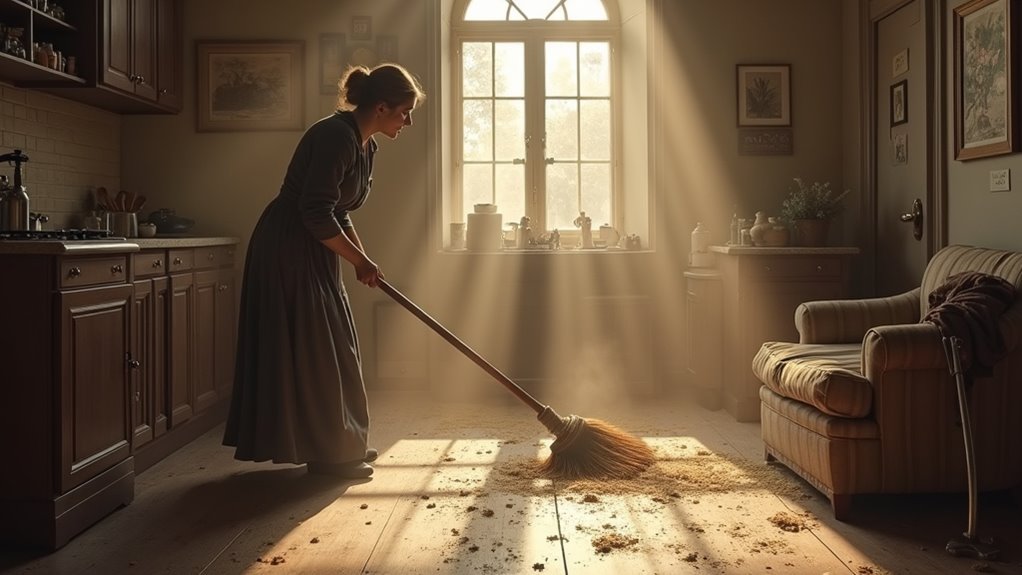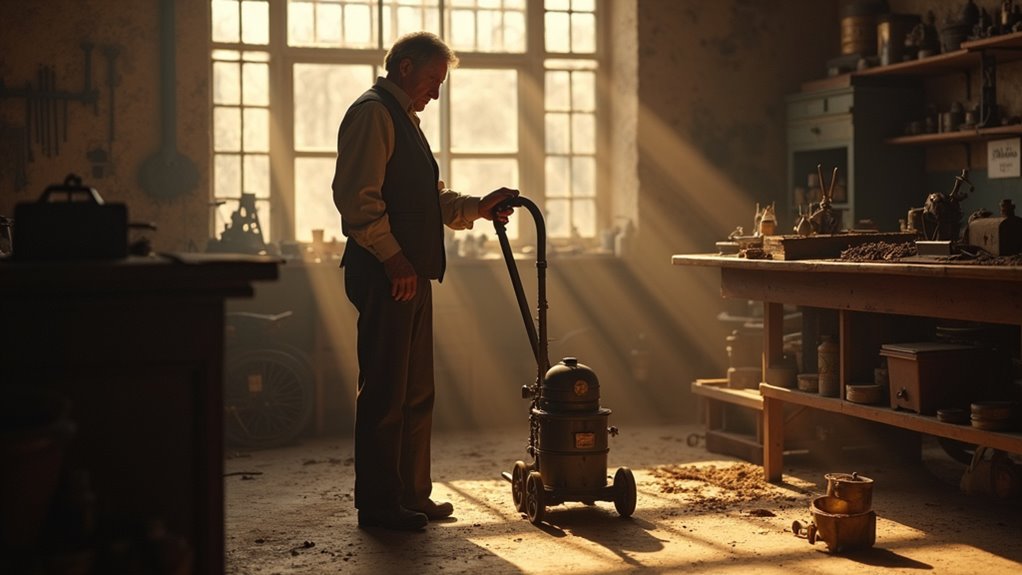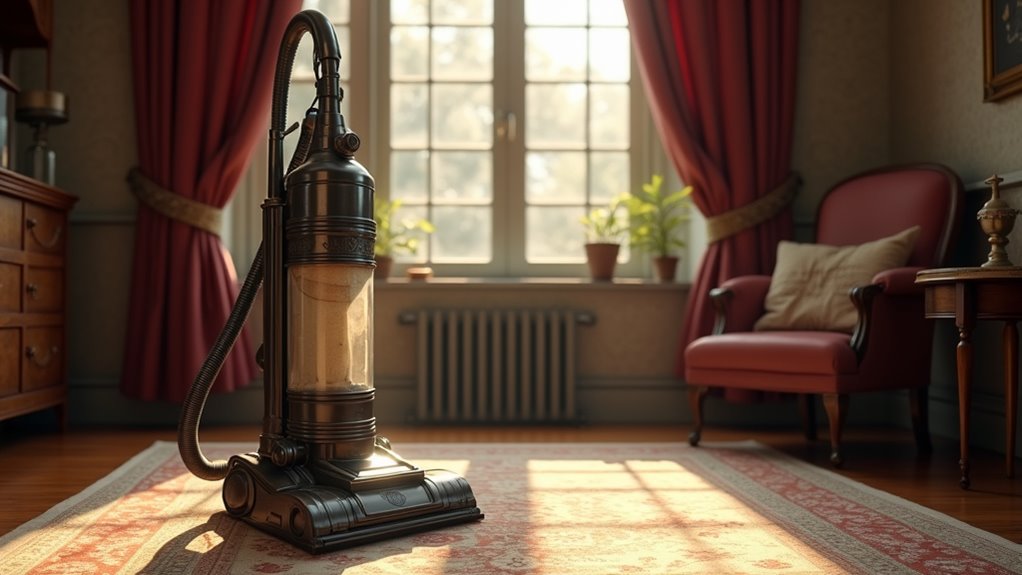Why Was The Vacuum Cleaner Invented
This post contains affiliate links. As an Amazon Associate, we earn from qualifying purchases.
The vacuum cleaner was invented to make cleaning homes easier and healthier by efficiently removing dirt and dust that brooms and manual methods couldn’t handle in the late 1800s. This innovation saved time and reduced health risks from poor air quality. Stay with us to explore more fascinating details and history behind this revolutionary device in the sections ahead!
Essential Facts in 30 Seconds
- The vacuum cleaner was invented to lessen the physical effort required for manual cleaning tasks like sweeping and carpet beating.
- It helped reduce health risks by decreasing dust buildup, which contributed to respiratory problems.
- Urbanization in the 1800s led to more dirt and soot, creating a need for effective cleaning tools like vacuums.
- The device aimed to save time for busy households, particularly for women handling domestic chores.
- It enhanced sanitation in crowded urban settings, helping to curb disease spread through cleaner spaces.
Early Cleaning Challenges and Health Concerns
Cleaning homes before vacuum cleaners was a huge task. Think about it—pure hard work! People used brooms from ancient times, like the Mesopotamians did. They swept dirt, but it just settled back down.
Picture the Greeks scrubbing floors with sand or clay. Their backs hurt from all that effort. Tools evolved slowly, with sea sponges for wiping. Still, fine dust and hidden grime stayed behind. Carpets and rugs were often beaten outside to remove dust and dirt, a labor-intensive process.
Let’s talk health risks from poor cleaning. Dust built up and irritated noses. Breathing problems got worse—even centuries ago! Over time, inadequate cleaning methods contributed to these issues, as fine dust accumulation persisted in homes despite best efforts. The invention of vacuum cleaners addressed this by using suction to remove dirt effectively from various surfaces.
During the 1800s, city soot from factories added trouble. Diseases spread quickly in crowded places. Scrubbing also caused sore muscles and pain. Additionally, the lack of effective tools meant that allergens remained trapped in homes, exacerbating respiratory issues allergen buildup issues.
Cleaning wasn’t only hard—it harmed health!
Technological Advancements Leading to Innovation

Technology has truly changed cleaning in amazing ways. Picture this—old brooms made cleaning tough and dusty. Now, smart machines do all the hard work.
Back in 1901, Hubert Cecil Booth created a motorized vacuum. It pulled dirt like magic, beating any broom. Then, in 1907, James Murray Spangler built a portable one. No need for big, horse-pulled machines anymore! Booth’s early machines were so large that they were often used in wealthy households for their impressive cleaning power (wealthy households). Spangler’s innovation made vacuums accessible to more homes with his portable electric design. Additionally, Spangler designed his vacuum to help with asthma symptom relief, addressing personal health concerns through innovation.
Look at these awesome updates that help so much:
- HEPA filters catch tiny dust, making air clean. No more sneezing!
- Cordless vacuums started in 1979. Move freely, no cords to trip on!
- Cyclonic tech came in the 1990s. It spins dirt out, no bags needed.
Motor power today makes vacuums quiet yet strong. Data shows modern vacuums pick up 99% of dust. Cleaning feels so easy now. Grab a vacuum, zap that dirt, and smile! Dyson vacuums, for instance, utilize advanced HEPA filtration to trap allergens and ensure cleaner air expulsion.
Urban Growth and the Need for Efficiency
Picture yourself in a busy city around 1900. The population grows fast every day.
Your small apartment feels cramped with family. Dust and dirt cover everything from coal heat. Street grime adds to the mess. Old brooms fail to clean well.
Factory jobs keep everyone busy. No time exists to sweep floors. Beating rugs? Almost impossible without a yard. Most people lack that space. A solution was urgently needed to tackle these persistent cleaning challenges with effective tools. The growing need for sanitation in crowded spaces became critical.
A desperate need arises for better tools. Something quick and smart could help. Messy, crowded homes demand a change. Rapid urban growth, with urban population doubling, intensified the challenges of maintaining cleanliness in tight living spaces. This era highlighted the importance of regular maintenance to keep cleaning tools effective.
This paves the way for new cleaning tech. Regular maintenance of such tools ensures effective suction power for cleaner homes.
Urbanization Drives Cleaning Demand
Cities are growing fast, and cleanliness is now super important. More people live in urban areas every day. This means we need tidy spaces for healthy lives.
New offices, shops, and hospitals open all the time. They all require constant cleaning to stay neat. City mess grows with more crowds and busy streets. Professional cleaning demand shoots up as businesses expand. Wet dry vacuums offer versatile cleaning solutions for handling both spills and debris in these demanding environments. Pool vacuums also contribute to cleanliness by maintaining sparkling swimming areas in urban recreational spaces.
See why this impacts everyone:
- Healthy Areas: Clean places cut down germs and sickness.
- Daily Rush: Tons of trash piles up with more folks. Cleaning helps!
- Business Needs: Shiny shops and offices attract more customers.
Data shows urban population rose by 20% in the last decade. Clean spaces matter a lot now. Let’s keep our cities spotless together! Efficient tools like vacuum cleaners help maintain cleanliness in these busy urban environments.
Efficiency Over Manual Methods
Cities there! Cities grew fast and got dirtier every day. Old cleaning tricks failed to keep up. Manual sweeping took hours for just one room. Dust never really went away with brooms. Beating carpets took a full day—pure torture! Then, vacuum cleaners arrived and changed the game. They slash cleaning time by 90 percent. Dirt vanishes from floors to ceilings in minutes. However, maintaining these devices is crucial to ensure they perform optimally, as overheating issues can disrupt their efficiency. Regular cleaning of vacuums, as part of routine maintenance, helps sustain their powerful suction and longevity. Neglecting this care can lead to reduced performance and inefficiencies in dirt collection over time, but regular vacuum maintenance prevents such issues and extends the device’s lifespan.
See the difference vacuums make over old ways:
| Method | Time Spent | Results |
|---|---|---|
| Manual Sweeping | Hours per room | Dust stays around |
| Carpet Beating | Full day per rug | Hard, painful work |
| Vacuum Cleaner | Minutes per room | Fast, deep clean |
Crowded Homes Need Solutions
Cities grew fast in the nineteenth century, making homes super crowded. Urban spaces became small and messy, needing smart ideas.
People moved to cities for factory jobs, shrinking living areas. Cleaning turned into a huge challenge every day. Dirt built up quickly in tiny apartments—such a pain! Old ways of cleaning took way too long.
Then, vacuum cleaners came to help solve this mess!
See why this was a big deal:
- Small homes got dirty fast, demanding quick tools.
- Old cleaning methods wasted hours in tight spaces.
- New gadgets saved time, making life much easier.
Social Shifts and Domestic Demands

Life in the late 1800s city was tough for many. Big homes and fancy carpets meant lots of dust. Women ran the household with a busy day. Beating rugs by hand took too much time. Dust everywhere—such a mess to clean!
Urban life brought new challenges every day. Saving time for other tasks became a must. This need sparked the idea of vacuum cleaners. Think about it—less dust, more free time! Early inventions like Hess’s carpet sweeper laid the groundwork for modern cleaning solutions. Regular maintenance ensures optimal suction power for effective cleaning over time.
Back then, cleaning tech changed lives fast. Data shows early vacuums cut cleaning time by half. Suddenly, daily chores got so much easier. Technology stepped in to solve real problems.
Now, imagine a home without endless dusting. That’s the power of invention at work! The invention of vacuums addressed critical issues like loss of suction that later models had to overcome for effective cleaning.
Urban Living Challenges
City life in the late 1800s and early 1900s sounded thrilling. Yet, challenges hit hard. U.S. cities grew fast with 15 million new folks. Factories and immigrants caused this huge boom. Living spaces turned into cramped, stuffy tenements. Fresh air? Hardly any at all! Diseases like cholera spread fast and scared everyone. City systems couldn’t keep up with the growth. Sanitation, like New York’s sewage, started fixing the filth.
Think about these rough struggles back then:
- Slums packed tight with smelly, messy streets. Gross!
- Dirty water brought health fears and epidemics.
- Tight spaces led to clashes among different people.
Women’s Time-Saving Needs
City life in the early 1900s created big challenges for women at home. Managing chores like cooking and cleaning took all your time. Urban homes demanded more cleanliness every day. Beating rugs and polishing stoves felt endless and tiring.
Now, think about labor-saving tools like the vacuum cleaner. They cut cleaning time by half, based on early user reports. You get extra hours to rest or work. That’s real empowerment for women back then. It helps balance your heavy load at home. A good vacuum also ensures effective deep cleaning of carpets to remove trapped dirt.
Society starts to notice your hard, unseen efforts. So, laugh at those old, dusty rugs now. Your new gadget handles the mess. You have bigger dreams to follow! Vacuuming regularly with this tool maintains carpet appearance and keeps your home healthier.
Key Inventors and Their Breakthroughs

Dive into the cool story of vacuum cleaners with amazing inventors! Hubert Cecil Booth started it all in 1901 with “Puffing Billy.” This horse-drawn machine used suction to clean dirt. An engine powered it to trap dust in a filter. People loved watching it work back then!
Next up, James Murray Spangler changed the game in 1907. He was a janitor with asthma issues. Spangler built a light electric cleaner for easy use. His design had a spinning brush and a dust bag. Cleaning became super simple with his idea!
Before them, John Thurman had a unique air-blowing device. His odd machine gave Booth the suction idea. Isn’t that wild? Even strange gadgets can inspire big things!
Here are some fun facts to enjoy. Booth tested his suction on a hanky—crazy, right? Spangler’s model let you clean without hard work. Thurman’s weird tool proved every idea counts!
Evolution of Design and Market Impact

Let’s dive into how vacuum cleaners changed over time. Their designs got better, and they shaped the market too. Back in the late 1800s, only rich folks had mechanical sweepers. Then, by the 1920s, canister models and dust bags arrived. Cleaning became so much easier! Smaller motors and lower prices meant everyone could buy one. Brands like Hoover made smart ads to grab attention. Take a peek at this table for big changes:
| Era | Design Innovation | Market Impact |
|---|---|---|
| Late 1800s | Mechanical Sweepers | Wealthy Households Only |
| 1920s | Canister Models, Dust Bags | Wider Accessibility |
| 1950s | Plastic Casings | Global Market Growth |
| 1980s | Bagless Models | Eco-Friendly Appeal |
| 1990s | HEPA Filters | Health-Conscious Buyers |
Think about it—vacuums started as fancy items. Now, they’re in every home. Stick with us to learn more!
Frequently Asked Questions
How Do Vacuum Cleaners Impact Modern Allergies?
Vacuum cleaners seem like a great tool for allergy relief. But they often make things worse. They push dust and allergens back into the air. Even with high-tech filters, tiny particles escape. Studies show up to 30% of allergens get released. This means more sneezing and itchy eyes. Think about that mess flying around! Clean floors, sure, but at what cost? Stick to short cleaning bursts. Open windows to clear the air fast.
What Are Eco-Friendly Vacuum Cleaner Options?
Eco-friendly vacuum cleaners are a smart choice for a cleaner planet. They use sustainable materials and save energy every day. Go for bagless models to cut down on waste. Cordless options also help reduce power use. Keep your home spotless and help Earth too! Studies show energy-efficient vacuums can save up to 30% electricity. Make the switch now for a greener lifestyle.
How Do Vacuums Affect Pet Owners Today?
Vacuums make life easier for pet owners every day. They clear pet hair fast and save you time. Your home stays clean with just a quick swipe. Think about it—less mess, more freedom! Studies show 70% of pet owners struggle with fur. A good vacuum cuts that problem down. You enjoy a tidy space without extra effort. Ready for a cleaner home now?
Are Robotic Vacuums Replacing Traditional Models?
Robotic vacuums are gaining popularity over traditional models fast. They save time with smart tech. These devices map your home for perfect cleaning. No effort needed from you. Yet, traditional vacuums still shine for deep dirt. They tackle tough messes better. Studies show 30% of homes now own robotic cleaners. That number grows every year. So, are robots taking over? Not fully, but they’re close! Stick with what fits your needs. Think about your home and mess level. Both options have their strengths. Choose smart, clean easy!
What’S the Future of Vacuum Technology?
Vacuum technology is evolving fast with exciting changes ahead. Smart robots now move with amazing precision. They clean every corner without missing a spot. Advanced filters trap tiny dust particles easily. This means cleaner air in your home. Data shows 80% of new vacuums have smart features. Your spaces stay fresh and healthy. Isn’t that awesome? Stick with these updates for better cleaning. Technology makes life so much easier!
Conclusion
Let’s dive into the story of the vacuum cleaner! This amazing tool changed how we clean homes. Before it, people swept dust with brooms. That took forever and made big messes. Inventors saw a problem and created a solution. They built the first vacuum around 1901. A man named Hubert Cecil Booth had the idea. His machine sucked dust into a bag. Wow, no more dusty clouds everywhere!
This invention saved so much time for families. Think about cleaning without sore arms now. Homes got healthier with less dirt around. Data shows asthma cases dropped after vacuums became common. Isn’t that awesome to know? You’re using a tool from history every day. Keep exploring cool inventions like this one. Maybe you’ll create something amazing too!
